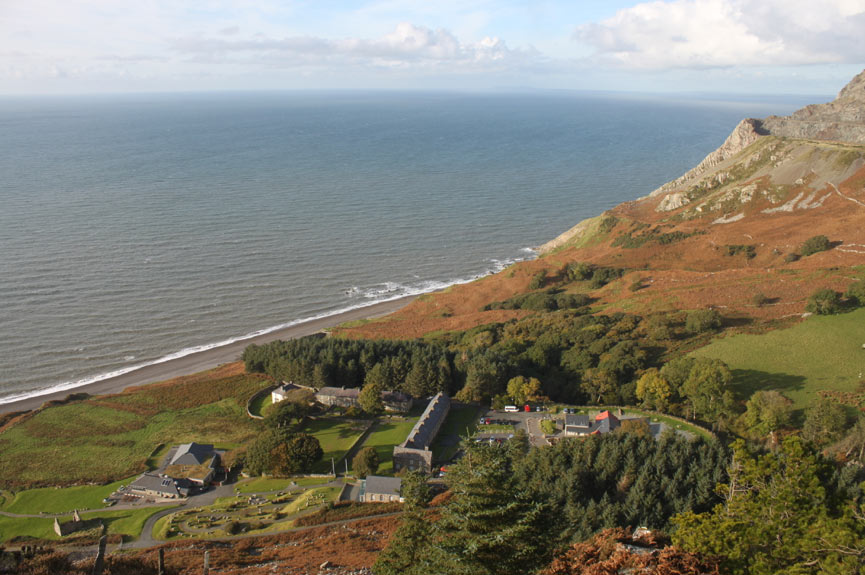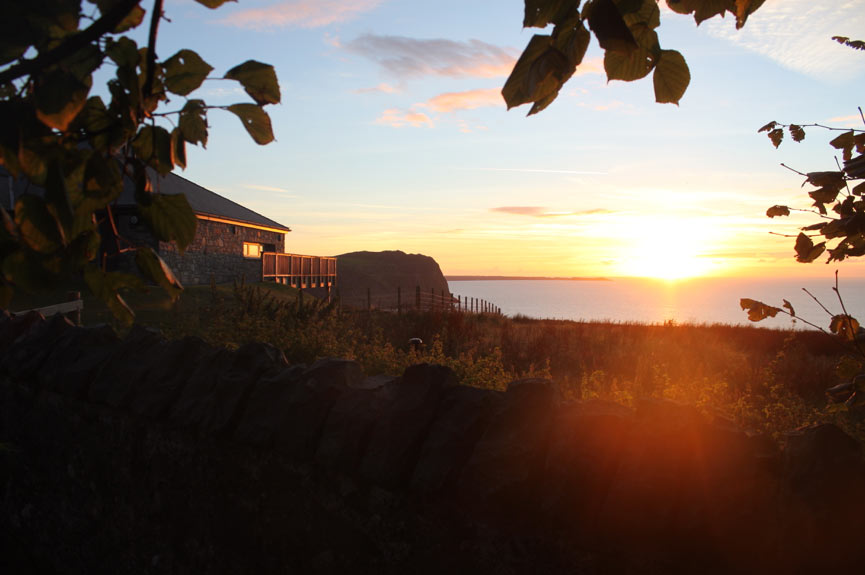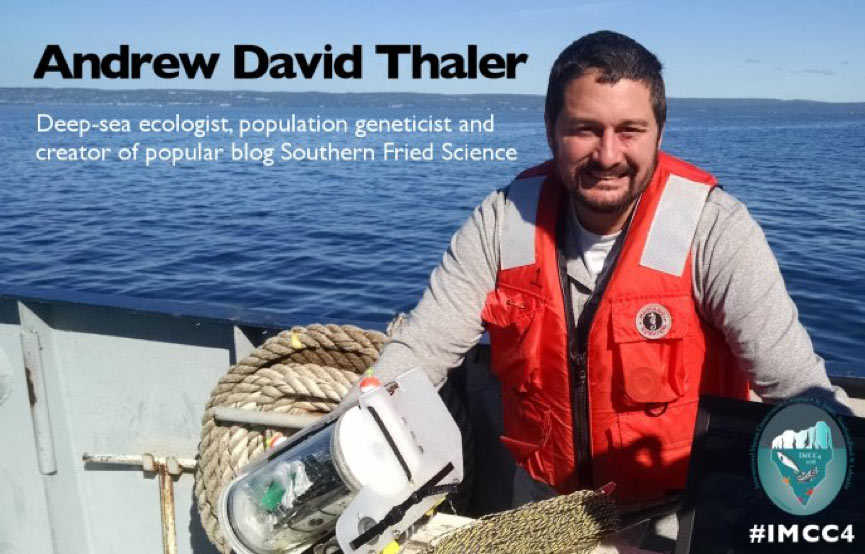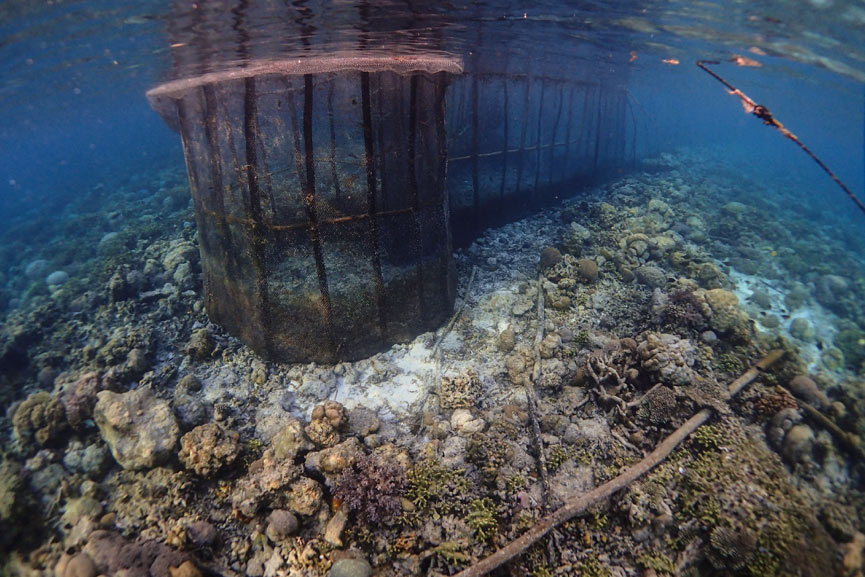Reflecting on ISBW12: “Securing a future for seagrass”

It’s already been one month since the 12th International Seagrass Biology Workshop began at Nant Gwrtheyrn in Wales. This time last month the world’s foremost seagrass scientists were descending on the Llŷn Peninsula and the Project Seagrass team were in the midst of the final preparations for hosting the largest International Seagrass Biology Workshop in recent times. Immediately prior to the conference The World Seagrass Association released a statement that had been endorsed by 122 scientists across 28 countries. The statement described how the international seagrass research and conservation community together with the World Seagrass Association called on all governments and global institutions to take local, regional and global action to ensure the future survival of seagrass meadows. This statement was instrumental in generating media coverage, and the conference was picked up by both local and national media outlets including the BBC. The conference itself kicked off with a healthy dose of #OceanOptimism which set a positive tone for the rest of the week. We learnt how seagrass science is reaching new audiences and how citizen science projects and novel educational tools are bringing seagrass meadows to the general public like never before. “Securing a future for seagrass” – Ocean Optimism was a central theme running thoughout the conference. The presentations and workshops that formed the bulk of the conference program provided numerous occasions to discuss the current key themes in contemporary seagrass science. These themes range from from ‘Blue Carbon’ and ‘Ecosystem Services’ to ‘Genetics’, ‘Physiology’ and ‘Resilience’. Critically, the conference also afforded the opportunity to discuss local management solutions to recreational boating impacts. Here the conference provided an opportunity to harness global seagrass knowledge and expertise in attempting to address a local concern. Despite the travel and costs involved, conferences really are one of the best ways of facilitating the sharing of expert knowledge amongst scientists and other concerned stakeholders. Workshops enabled delegates to draw on scientific and management expertise from across the world. Mid-way through the conference we had organised a ‘fieldwork’ afternoon where delegates would have free time available. This was either an chance for them to take time and space for themselves or to take the opportunity to visit some of the local sights and attractions. The field trips organised by the commitee included a historical trip to Caernarfon Castle, a local guided walk around Nant Gwrtheyrn and what turned out to be an extremely popular Porthdinllaen nature walk and seagrass meadow visit. Never before has our local meadow received so much attention nor have we had so much valuable input as to the state of the Porthdinllaen meadow – so thank you all for that! The seagrass meadow at Porthdinllaen has never received so much attention! After local field trips, one of the favourite elements of any conference I have attended has to be the Poster Session(s). This is an opporunity for scientists to stand by a poster of the research they have done and use it as a tool to communicate their work to other scientists and managers. I enjoy these sessions primarily because you can spend as much time as you want with the researchers and really get to understand the context and methods behind the research being conducted. Personally, I thought the quality of posters presented at ISBW12 were some of the highest I have seen at any conference anywhere and I’m sure we were all impressed with the contributions from our student (and pre-student!) researchers. So well done #TeamSeagrass! So many of the posters were truly excellent! Including this poster from Theodora and Helen Horangic. As the conference week drew to a close the Conference Dinner provided a great opportunity for colleagues to relax and celebrate what had been a fantastic week of seagrass science. It was also the opportunity to inform everyone that the next conference, the 13th International Seagrass Biology Workshop (ISBW13), which will be in Singapore in 2018. Dr Siti Maryam Yaakub SJ was able to share with us that the location of ISBW13 will be in Singapore in 2018. As the sun set on the final night of ISBW12 I felt a strong sense that this conference was surely just a springboard to the greater recognition of seagrass meadows globally. It’s great to see so many scientists sharing their stories in the media and championing the seagrass cause in their local area. One month on it’s up to us to make sure that the “Seagrass Surge” of ISBW12 was not just a flash in the pan, but the start of a genuine global movement to put seagrass meadows alongside other marine ecosystems at the centre of marine discussion. As the sun set on ISBW12 I believe the sun is only really beginning to rise on seagrass science as a whole. A big thank you to everyone who participated in ISBW12. It was a genuine pleasure to host the seagrass community in Wales and we are very much looking forward to seeing you all again in 2 years time… Until then! Keep up the good work! #TeamSeagrass
ISBW12 – A first conference blog!

First off, the stereotype of a conference in my head is hushed voices, fancy clothes and everything deadly serious, but throw into the mix that it’s a conference based around seagrass and I was completely at a loss as to what to expect. Having packed for all possibilities (would the seagrass team transform into a posh looking bunch? Or would the usual jeans and an old tee be acceptable?) we headed up to Nant Gwrtheyrn in North Wales. The Nant is a gorgeous former quarrying village looking out past dramatic cliffs to the ocean with a seagrass bed just around the corner- I was definitely spoilt with the location of my first conference, it doesn’t get much better than having only a five-minute walk to the beach to process the constant buzz of activity. It’s probably not the normal conference experience that one of the first things I learnt was that if you sneak off last minute to pretend to be in The Lord of the Rings exploring the cliffs, then put on things that can get muddy- twice I went down, but proudly caught myself before my one pair of semi smart trousers changed colour! The path from Nant Gwrtheyrn conference centre down to the beach. To kick the week off was a plenary by Professor Carlos Duarte (King Abdullah University of Science and Technology) talking optimistically about seagrass meadows and popular culture getting everyone laughing – an easy start; maybe conferences weren’t so big and scary! It did leave one question on a conference newbies mind though, the word ‘plenary’ was not yet in my vocabulary – so any students heading to your first conference, everyone attending the conference goes to these, in other words if you talk at one then you deserve respect, you’re a big name in your field! Professor Carlos Duarte ‘Securing a Future for Seagrass’ in the weeks first plenary. So next up was my first workshop. Again the apprehension was definitely there – I’m an undergrad, what could I have to offer to all these academics? Well most of the time not a lot, but it was a perfect opportunity to question and learn, and once in a blue moon I might stumble across an idea that the top dogs had over looked. As intimidating as a professor with a tonne of published papers is, they tended to be welcoming to all ideas and helpful to gently point out that they tried that method 20 years before and it may not be the strongest approach. Timing and Triggers for seagrass flowering workshop with Nordlund LM, Creed J, Jackson E, & Nakaoka M. Despite some fascinating talks and some hot debates at workshops (seagrass scientists can get heated!) that’s not where I personally learnt the most. Sitting with new people each meal time and relaxing with them after a long day was when I found the most inspiration; it’s the time when people get excited about their work and me being fresh faced to the seagrass world meant they could just enjoy telling their seagrass stories without worrying about nitty gritty details. In those relaxed situations people were happy to chat and answer my drilling of questions. The enthusiasm of Dimosthenis Traganos, a Greek pHD student studying in Berlin, who’s eyes lit up as he was telling me about using satellite imaging to map the seagrass of his home lands and the pride as Oliver Thomas from Heriott-Watt University described the numerous different studies he’d done to complete his masters; these were the times when I found as a conference first-timer that I learnt the most. Dancing to ‘y Moniars.’ a local Welsh band. Helping the organising team I felt as though I was sat nicely on the edge of the eye of a storm- able to see the manic behind the scenes madness, but also able to join the peace of the attendees. It was a week of huge learning curves in all aspects- sharing with two Indonesian ladies meant early starts and spicy tea, that whatever culture you come from there is no end to small talk about the welsh autumnal weather and hopefully I’ve picked up one or two new seagrass facts along the way too. A huge thank you to Project Seagrass for all their hard work in helping to host the twelfth successful International Seagrass Biology Workshop and for giving me the opportunity to tag along and get involved. It was definitely a positive week for securing a future for seagrass. And in case you were wondering, the seagrass team does not magically transform into a group wearing tuxedos and ball dresses with pinkies always out when they enter a conference room, they’re still as chilled as ever.
The 4th International Marine Conservation Congress – Making Marine Science Matter.

www.conbio.org The International Marine Conservation Congress (IMCC) represents one of the most important international meetings for marine conservation professionals and students. IMCC4 was recently held in St. John’s Newfoundland and Labrador between 30 July – 3 August 2016, building on from the success of Glasgow in 2014 and bringing together conservation professionals and students from across the globe. A key ambition for the conference is to develop new tools and foster collaborations that will further marine conservation science and policy. The overall theme of IMCCs is: “Making Marine Science Matter” For marine conservation to be effective, marine conservation science must genuinely matter to stakeholders, policy makers, and practitioners. To try to accomplish this, the IMCC congresses are generally organized around specific topics of interest for marine conservation, or as topics relevant to specific places. In addition to the regular conference proceedings, IMCC4 also witnessed the inauguration of “#OceansOnline”, a full day of Making Marine Science Matter through online communication and the use of other online resources. Here delegates participated in hands-on training workshops tailored to beginners, and facilitated discussion panels hosted by experts in their fields. Marine Science and Conservation Consultant Andrew Thaler was one of the plenaries – check him out at www.OceanographyforEveryone.com and at @SFriedScientist on Twitter. #OceansOnline is a first of its kind, and from a personal perspective it provided a platform for discussion on how internet tools can help marine scientists and conservation professionals with research, education and outreach. Something which is at the very heart of what we are trying to achieve with Project Seagrass and our SEA Program (Seagrass, Education, Awareness). Sessions about how and why we should talk about success in marine conservation and avoiding the pessimism trap gave us reason to pursue an outlook of #OceanOptimism. As well as ‘making waves inland’, the challenge for ocean literacy in land-locked locations – something that we should really not struggle with in the Britain, and yet we do, as we are never more than 70miles from the coast! #OceansOnline help bring together the online ocean community, facilitating new collaborations and pioneering new technologies. It was through #OceansOnline that I was directly involved, and proud to be. Inspirational colleagues from both academia and the fishing industry (see below) have made the point previously that policies about marine resource use of often decided in the absence of key stakeholders, and in particular with main fishermen feeling voiceless and ignored. This feeling is one that I can directly relate to from my work with the Lipsi Fishermen’s Association in Greece. Here I have worked with a group of fishers heavily reliant on the fisheries provision of their coastal seagrass ecosystems (Posidonia oceanica) and yet as a group they feel powerless to effect change in the regional fisheries management structure. So the idea was to run a workshop on “Bringing fishermen to the table” using online “Bambuser” technology. A simple concept, yet one that marks a pretty important development considering a lot of commercial fishermen (from both developed and developing countries) cannot attend conferences like IMCC4 or other such events. If the fishermen can’t come to the conference then the conference can come to the fishermen! As you can see from the screenshot below the Bambuser platform provides a livestream video feed and a chat function, allowing fishermen, scientists and policy makers to discuss issues around a virtual table. Whilst use of this technology is in its infancy for marine collaboration and communication, with the rapid developments in global internet speeds and connectivity, we all see online tools such as Bambuser as the future in providing essential communication channels between stakeholder groups. If the fishermen can’t come to the conference, then the conference can come to the fishermen! Whilst there may have been teething problems during the session (sound and stream quality in some locations), the general feedback we have received has been overwhelmingly positive. The feedback was overwhelmingly positive about the session. We hope the session provided an example of what can be achieved for our oceans ‘online’, and that we see more use of online technologies to bridge the gap between stakeholders and provide a platform for discussion for marine resource management. Well that’s me for now. Until the next time!
The 13th International Coral Reef Symposium – Bridging Science To Policy

The International Coral Reef Symposium (ICRS) is the primary international meeting for researchers who are focused on coral reef science and management. In fact, as a conference it has a similar ecosystem focus to the International Seagrass Biology Workshop (ISBW) that we will be hosting in Wales this coming October. The Symposium, held in Hawai’i last week brought together over 2,500 coral reef scientists, policy makers and managers from around 100 different nations in a forum to present the latest research findings, case histories and management activities, and to discuss the application of scientific knowledge to achieving coral reef sustainability. Coral reefs are one of our planets most bountiful ecosystems and they provide essential ecological, economic and cultural services to the people of tropical and subtropical islands and coastal communities worldwide. Coral reefs can be are a huge source of income to adjacent coastal communities through eco-tourist activities. Latest estimates suggest coral reefs provide close to US$30 billion each year in goods and services, so not only are do they support enormous biodiversity they are also of immense value to humankind. However, whilst scientific knowledge about coral reefs has increased exponentially over the past few decades, the state of reefs globally has declined during this period. Globally coral reef ecosystems are being degraded. Multiple stressors from the global actors of climate change, ocean acidification and overfishing to localized habitat destruction (above) are all contributing to habitat loss. To address this disconnect, the theme of the 13th ICRS was “Bridging Science to Policy”, with specific goals focusing on: Improving trust and communications among scientists, policy makers, managers and stakeholders. Developing strong partnerships between political leaders and the scientific community. Guiding efforts and strategies for effective allocation of limited financial, human and institutional resources to halt and reverse coral reef decline locally and globally. Developing a framework for quantitatively evaluating the effectiveness of coral reef protection and recovery activities and initiatives by applying the best available science. The ICRS is of course devoted to the best reef science available, with the purpose of sharing scientific findings with government agencies, resource management, and non-government organizations throughout the world. Such conferences are immensely important because they provide the international science community with a platform to: Increase global knowledge and interest in coral reefs, including sustainable use and conservation strategies; Showcase successful science, conservation and management efforts; Develop collaborations and partnerships to increase international capacity to address coral reef issues; and Increase global awareness of reef degradation and possible solutions by extensive promotion in the media. It is exactly through increasing global awareness and the developing of collaborations and partnerships that we as a global community are likely to address global challenges, and it is for this reason that so many scientists are being encouraged to take the Oceans Online. To conserve the world’s oceans we must go beyond just the production of science, but to also use it to inform policy and management, and ultimately to catalyze change. This change will only happen if we can reach out to all stakeholders, and work together with a common purpose, for many this means stepping up to the challenge of becoming public advocates for our natural environment. Many marine scientists are taking the #OceansOnline! Increasing global awareness of reef degradation whilst promoting possible solutions and #OceanOptimism. There are already many scientists who have taken this message to heart and produce a wonderful array of online media through which to inspire and engage. For example a fantastic summary of the ICRS 2016 conference can be found here and outstanding leadership from all the signatories of the conference (the 2,500 scientists at the ICRS) imploring Australia to protect the Great Barrier Reef here. So for all those involved in LIVE TWEETING from ICRS2016 – thank you! All that remains is to share and promote the ‘distilled down’ “Take-Home Messages” from the conference that are pertinent for us all to share in and acknowledge. These are: Reefs are threatened, not doomed Climate change, pollution and overfishing are the 3 drivers that ALL have to be addressed Local, pro-active interventions can help to build resilience of reefs to climate change, but reefs cannot be climate-proofed Prevention is better than cure, but recovery is possible Scientists can help by spreading the message that reefs can still be saved if we actually try harder! So let us also get to work! #TeamSeagrass
CERF 2015 – Grand Challenges in Coastal and Estuarine Science

A long-standing tradition of Coastal and Estuarine Research Federation (CERF) conferences is the friendly and collegial environment and the unwavering support for early career scientists. This #CERF2015 was no exception with a multitude of leading marine scientists inspiring the next generation with #OceanOptimism as together we tackle the Grand Challenges together. This was despite a brilliant opening keynote by Berth Kerttula, Director of the National Ocean Council. ‘The Good, The Bad and The Ugly’ of marine problems! #CERF2015 was very active on social media, check out the hashtag To give you a quick history lesson, CERF conferences have been held biennially since 1971 with the aim of: ”…advancing human understanding and appreciation of the Earth’s estuaries and coasts, to the wise use and management of these environments and to making the results of their research and management actions available to their colleagues and to the public.” Such admirable ambitions are inline with our own at Project Seagrass and so CERF conferences are natural home for promoting our vision: “Our vision is that our marine ecosystems are healthy, well-managed and full of life.” At this conference a whole range of topics pertaining to seagrass meadows were discussed. Seagrass restoration techniques were presented by Per-Olav Moksnes, Louise Eriander and Eduardo Infantes of Göteborg University in Sweden, whilst Rohani Ambo-Rappe showcased us transplantation methods for seagrass restoration in the Indo-Pacific. Michael Rasheed from James Cook University, Australia was able to report on the protection of the Great Barrier Reef seagrasses. He presented work on innovative monitoring of seagrasses at high risk from coastal development. Similarly Len McKenzie (also of JCU) was able to report on the status of seagrass meadows adjacent to the highly urbanized city-state of Singapore. One of the most inspiring research projects to be discussed at CERF2015 must surely be the work of the Zostera Experimental Network (ZEN). Pamela Reynolds provided a summary of research into the biodiversity and complexity of seagrass functioning across the northern hemisphere. Such collaborative research is surely cause for #OceanOptimism!# There were some fantastic posters at the conference documenting a range of seagrass research topics. Yet it wasn’t just the established names who were doing exceptional seagrass research. There were over 700 students and early-career scientists at the conference who had produced some fantastic research and were contributing significantly to our global knowledge base. Not least Erin Voigt won best student talk #CERF2015 for her work on the effect of structural complexity and biodiversity on seagrass ecosystem function. To all those involved in the hosting of the conference – thank you, and to all those who are conducting seagrass research – thank you! Keep up the good work and see you at ISBW2016. #TeamSeagrass
Registration for the 12th International Seagrass Biology Workshop is Now Open!

The International Seagrass Biology Workshop (ISBW) is the only international meeting specifically tailored to seagrass scientists, professionals and students. Abstract submissions are now open as are proposals for workshops. All payment is via PayPal using credit/debit cards. There is one registration fee. It covers access to all parts of the conference program, including the following: Shuttle bus from Bangor (on Sunday 16th Oct and Monday 17th Oct) and return on 21st and 22nd Oct. Welcome event Field trip (excluding option extra activities e.g. diving) Poster event Conference dinner Tea and coffee Additional local trips Onsite Wifi access Accommodation bookings will include all meals (approx. £95 pppn) and need to be paid directly to Nant Gwrtheyrn. See the Accommodation page here. For more information check out the registration page here.

